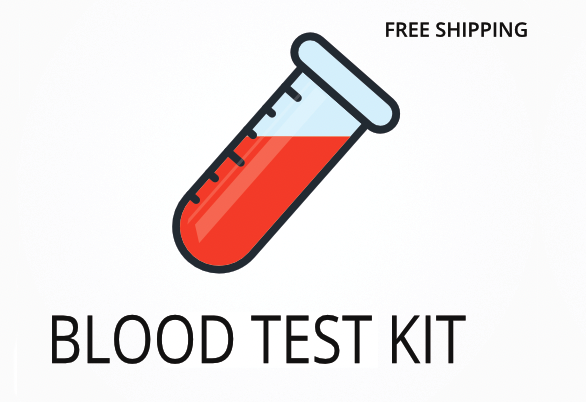Ordering the Tick Borne Disease Panel 3
Ordering the Tick Borne Disease Panel 3 helps detect a range of infections that can be passed by ticks, including Lyme, Babesia, Bartonella, Ehrlichia, and others. This test uses advanced methods to look for both early and late markers of infection, which can help identify cases that might be missed by single-marker tests. Interestingly, some tick-borne infections can cause symptoms that appear weeks or even months after a tick bite, making early detection important for targeted treatment.
Ordering this panel offers several specific benefits:
- Detects multiple tick-borne infections at once, saving time and reducing the need for repeat blood draws.
- Includes both antibody and direct detection methods, increasing the chance of finding active or past infections.
- Helps clarify the cause of symptoms that overlap with other conditions, such as joint pain or fatigue.
- Supports doctors in choosing the right treatment by showing which infections are present.
- Reduces the risk of missing co-infections that can make symptoms worse or last longer.
Who Should Consider Tick-Borne Infection Testing
People who have spent time outdoors in grassy or wooded areas and later develop symptoms like fever, joint pain, or memory problems may benefit from this test. For example, someone who enjoys hiking and later notices unexplained fatigue and night sweats might not connect these symptoms to a tick bite weeks earlier.
Ordering this test may also be helpful in these situations:
- After finding a tick attached to the skin, even if no rash appears.
- When symptoms such as facial palsy, heart palpitations, or neuropathy develop without a clear cause.
- If a doctor suspects a tick-borne illness but previous tests were negative or unclear.
- For people with ongoing symptoms like muscle pain or sleep disturbances after travel to areas where ticks are common.
- When unexplained eye inflammation or mood changes occur, as these can sometimes be linked to tick-borne infections.
Testing can help pinpoint the cause of symptoms by checking for specific infections, which can lead to more targeted treatment and a clearer plan for recovery. Delaying this test may allow infections to progress, making them harder to treat and possibly leading to more severe or long-lasting symptoms.
How to Prepare for Tick-Borne Disease Screening
Fasting is not required before this test, so you can eat and drink as usual. Make sure to carefully follow any instructions your doctor or healthcare provider gives you to ensure the sample is collected correctly and results are as useful as possible.
Labs Included When Ordering Your Tick Borne Disease Panel 3
| Test Name | Reference Range | What the Test Measures | Low and High Levels of Tick Borne Disease Panel 3 |
|---|---|---|---|
| Lyme IgG/IgM/IgA Screen | Negative: <0.90 Equivocal: 0.91-1.09 Positive: >1.10 |
Screens for antibodies to Borrelia burgdorferi, the bacteria that causes Lyme disease. Detects both early (IgM) and later (IgG, IgA) immune responses. |
High levels mean your immune system has responded to Lyme bacteria, suggesting current or past infection.
Low levels mean no detectable immune response to Lyme, which may indicate no infection or very early infection. |
| Lyme IB IgM & IgG | IgM: 2 of 3 bands IgG: 5 of 10 bands |
Confirms Lyme infection by detecting specific antibody bands. IgM shows recent infection; IgG shows longer-term or past infection. |
High levels mean a strong immune response to Lyme, supporting a diagnosis of active or past infection.
Low levels mean fewer or no bands, which may suggest no infection or a very early stage. |
| Tick Borne Relapsing Fever – Borrelia (TBRF) IB IgM & IgG | IgM: 2 of 3 bands IgG: 2 of 5 bands |
Detects antibodies to relapsing fever Borrelia species, which can cause recurring fevers and other symptoms after tick exposure. |
High levels mean your body has made antibodies to relapsing fever Borrelia, suggesting infection.
Low levels mean no or few antibodies, which may indicate no infection or a very early stage. |
| IgG & IgM IFA: B. microti, B. duncani, HME, HGA | Negative: <1:40 Equivocal: 1:40 Positive: >1:40 |
Checks for antibodies to Babesia microti, Babesia duncani, Ehrlichia (HME), and Anaplasma (HGA), which are common tick-borne infections. |
High levels mean your immune system has responded to one or more of these infections.
Low levels mean no detectable antibodies, which may suggest no infection or very early infection. |
| B. henselae | Negative: <1:64 Equivocal: 1:64 Positive: >1:64 |
Detects antibodies to Bartonella henselae, a bacteria that can be spread by ticks and cause symptoms like fever, swollen lymph nodes, and eye inflammation. |
High levels mean your body has made antibodies to Bartonella henselae, suggesting infection.
Low levels mean no or few antibodies, which may indicate no infection or a very early stage. |
| R. rickettsii/typhi IgG | Negative: <1:64 Equivocal: 1:64 Positive: >1:64 |
Measures antibodies to Rickettsia rickettsii and Rickettsia typhi, which can cause spotted fever and typhus after tick or flea bites. |
High levels mean your immune system has responded to Rickettsia, suggesting infection.
Low levels mean no or few antibodies, which may indicate no infection or a very early stage. |
| Babesia & Bartonella FISH | Negative: No organisms seen Positive: Organisms detected |
Uses a special stain to look for Babesia and Bartonella organisms directly in the blood, which can help confirm active infection. |
High levels mean organisms are present, showing active infection.
Low levels mean no organisms were found, suggesting no active infection at the time of testing. |
Reference ranges may change slightly as labs update their methods or as new research becomes available. Always check your report for the most current reference values.
Tick Borne Disease Panel 3 FAQ
Is there Tick Borne Disease Panel 3 testing near me?
This is a test kit that can be collected at a local draw site—check the draw location link at the top of the page. Because symptoms like joint pain or memory problems can make travel difficult, having a nearby collection option makes it easier to get tested quickly and comfortably.
How do I interpret the test results?
While your treating physician should always review your results, we also offer a one-on-one test results review with our clinical team to help you understand what your results mean and what steps to consider next.
What is the cost of the test?
The price listed for the test includes standard shipping to you and return shipping to the lab, though draw fees may apply at your local collection site. Ordering this test can help you find out if a tick-borne infection is causing your symptoms, which may help you get the right treatment sooner.
How often should I retest?
Retesting is usually recommended 4-6 weeks after the first test if symptoms continue or if new symptoms develop, as some infections may not show up right away. Repeating the test can help track changes in your immune response and guide your doctor in adjusting your treatment plan.
How accurate is the test?
This panel uses immunoblot, immunofluorescence assay (IFA), and FISH methods, which are highly specific for tick-borne infections. The sensitivity is about 95% and specificity is about 98% for most markers. TrueHealthLabs.com works with CLIA-certified and CAP-certified labs to maintain high-quality testing standards you can trust.
Important Notes
Test results should always be interpreted in the context of your symptoms and medical history. Some infections may require repeat testing or additional follow-up with your healthcare provider.
Medical Review Board
Reviewed by Jeff Donohue M.D. from Body Logic and Brady Hurst DC, CCCN. Written by True Health Lab’s team of editorial health contributors.
Disclaimer: This information is for educational purposes only and not intended as medical advice. Consult your healthcare provider for personalized guidance.
Why Customers Trust True Health Labs - What People are saying
Also rated 4.6 out of 5 based on 3452 ShopperApproved reviews- See all TrueHealthLabs.com reviews.






